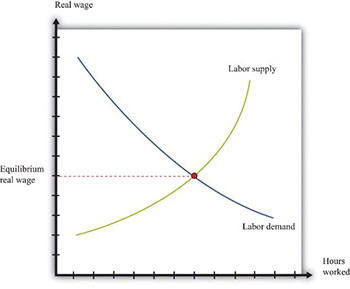The Economic Impact of the Gender Pay Gap
Skylar Scott, Senior Researcher
December 9, 2020

Karen Tao and I have been working hard on new research studying Utah’s gender pay gap. This research is now entering the first draft stage (https://udrc.utah.gov/peerreviewprocess.pdf). From a normative economics perspective, I hope most people agree that equal pay should be given to individuals for equal work, regardless of gender. Without considering an economy’s output or the labor market, I think gender wage bias is an important topic to study. This topic has recently made headlines in Utah as we ranked 48th (tied with Rhode Island) in pay inequality as a dollar figure and 50th for the largest gap in hours worked (Jacobs, 2020). However, it is also helpful to understand the impact of wage bias from a labor economics perspective.
Labor economists typically divide production factors into four categories: land, labor, capital, and entrepreneurship. The wages and quantity that determine the need for labor, in macroeconomics, are dictated by supply and demand factors. For example, future expectations often influence how much employers hire now and what wage they offer laborers. From a microeconomic perspective, an individual’s labor price is affected by the macroeconomy and human capital measures like education, experience, output, and skills. The individual must then decide if they should enter the labor market and how much time to devote to work against their opportunity cost. Opportunity cost is determined by the next best alternative to the workforce, like leisure, raising children, or attending school (Borjas, 2020).

When gender pay bias occurs, it affects the labor market from both a macro- and microeconomic perspective. From a macroeconomic standpoint, efficiency in the labor market occurs when labor supplied is equal to the labor demanded. At this point, there is no shortage or surplus of labor. If employers pay prices that are lower than that dictated by equilibrium real wage, output decreases, and dead-weight loss occurs (see Figure 1). From a microeconomics perspective, women offered a lower price for labor, with opportunity cost unchanged, will be more likely to work fewer hours or choose not to enter the labor market at all. Furthermore, women’s employment choice is influenced in favor of firms without selection bias (Borjas, 2020).
Our study is unique in that we focus specifically on recent graduates in Utah and are able to decompose the results based on human capital measures and observe how wages change over time. We have factored the impact of these human capital measures into the difference in pay to understand how much gender wage bias occurs and when it happens in a graduate’s career. As work continues on our gender pay gap study, we are excited to share these results with you.
References
Borjas, G. J. (2020). Labor economics 8th Edition. Boston: McGraw-Hill/Irwin
Jacobs, Becky (2020) “Our study is unique in that we focus specifically on recent graduates in Utah and are able to decompose the results on human capital measures.” Salt Lake Tribune. Originally published August 24, 2020. https://www.sltrib.com/news/2020/08/24/utah-ranked-worst-state/